Roger Federer: How Does He Stack Up Against the 10 Greatest of All Time?
In over a century of judging the hits and misses of men’s professional tennis, tournament rules have come and gone. Styles of play rose and fell with the passage of time.
Technology has increased speed, spin and accuracy as rackets evolved and athletes became bigger, stronger and faster.
In light of constant evolution, it becomes difficult to compare players from one generation to the next because unlike baseball, tennis has never been a game noted for rote statistics.
That is not to say the stats were not there, but as a professional organization, no one thought to keep numbers comparing players in a consistent and forward-thinking manner. Sometimes even the most rudimentary facts about a match are missing.
Even today, there is no consensus about just what statistical measures are important in judging the overall careers of the top men in tennis.
The statistics that seem to matter most currently are: (1) the number of grand slam victories; (2) the number of weeks or total length of time holding the No. 1 ranking; (3) the number of year-end tour championship wins over the best eight men in the field, and (4) the number of Master’s Shields won. Many other statistics considered important by the ATP are detailed here
This ranking looks at players of the modern era, since 1968, although a great case can and should be made for male tennis stars who played before the Open Era.
Compare Federer’s numbers to the stats of others with him in the top 10, especially those who have won slams on all surfaces.
These 10 players in the modern era have set the bar for the rest following in this 21st century.
10. Mats Wilander – 7 Grand Slam Singles titles, 33 Singles Titles, 20 Weeks at No. 1.
Mats Wilander never won Wimbledon even though he managed to win the Australian Open when it was still played on grass.
His baseline game was a severe test to overcome. Contemporary serve and volleyers playing against Wilander thought that three shots comprised a long rally. The Swede, however, won his points slowly, wearing his opponents down with his fitness and his determination to win.
In 1988, Wilander accomplished winning three out of four majors along with securing the No. 1 ranking at long last.
Career Statistics for Mats Wilander
(1) 33 singles titles out of 59 finals, 55.9 percent
(2) 7 doubles titles out of 18 finals, 38.9 percent
(3) 7 Grand Slam singles titles out of 11 finals, 63.6 percent. No wins at Wimbledon.
(4) l Grand Slam doubles title.
(5) 0 ATP Year-End Tour Championships in singles
(6) 0 Olympic Gold Medals.
(7) 0 ATP Masters Shields.
(8) 20 weeks at No. 1 in singles
(9) 1 year-ending World No. 1 ranking
(10) 571 career singles matches while losing 222 for an overall FedEx Index of .720.
(11) 144 career singles grand slam matches while losing 37 for an overall FedEx index of .796.
(12) 13 career singles Masters Series 1000 matches while losing 16 for a FedEx index of .448
9. Jimmy Connors – 8 Grand Slam Singles Titles, 107 Singles Titles, 268 weeks at No. 1.
Jimmy Connors won most of his matches with attitude. He simply refused to lose unless his opponent was more insistent than Connors. This did not happen often.
Connors seemed more like a prize-fighter than a tennis player. He only knew one gear. Third or all out attack. Connors let you know right out of the gate that he was not going to give away anything. If he lacked finesse in his game, he did not care. His total aggression was usually enough to get the job done.
Career Statistics for Jimmy Connors
(1) 107 singles titles out of 158 finals, 67.7 percent Won 15 doubles titles out of 26 finals, 57.7 percent
(2) 8 Grand Slam singles titles out of 15 finals, 53.3 percent. No French Open wins.
(3) 2 Grand Slam doubles titles out of 3 finals, 66.7 percent.
(4) 1 ATP Year-End Tour Championship in singles.
(5) 0 Olympic Gold Medals.
(6) 0 ATP Masters Shields.
(7) 268 weeks at No. 1 in singles
(8) 5 year-ending World No. 1 ranking
(9) 1,242 career singles matches while losing 277 for an overall FedEx Index of .81
(10) 232 career singles grand slam matches while losing 49 for an overall FedEx index of .826.
(11) 5 career singles Masters Series 1000 matches while losing 6 for a FedEx index of .465
8. Andre Agassi – 8 Grand Slam Singles Titles, 60 Singles Titles, 101 Weeks at No. 1
You could really say that Andre Agassi lived through two tennis careers. He burst onto the scene as the superstars of the 1980s were beginning to fade, bringing a new brand of attitude onto the court.
Early on Agassi was expected to dominate the men’s game, but, he got upstaged by Sampras and other Americans. He could have retired with a decent record. Feeling he had not done his best, Agassi reinvented himself as a serious athlete, whose determination was second only to his determination.
Career Statistics for Andre Agassi
(1) 60 singles title out of 90 finals, 66.7 percent
(2) 1 doubles titles out of 4 finals, 25.0 percent.
(3) 8 Grand Slam singles titles out of 15 finals on all surfaces and at all venues––53.3 percent.
(4) 1 ATP Year-End Tour Championships in singles
(5) 1 Olympic Gold Medal in Men’s Singles.
(6) 16 ATP Masters Shields.
(7) 101 weeks at No. 1 in singles
(8) 1 year-ending World No. 1 ranking
(9) 870 career singles matches while losing 274 for an overall FedEx Index of .760.
(10) 224 career singles grand slam matches while losing 53 for an overall FedEx index of .809.
(11) 209 career singles Masters Series 1000 matches while losing 73 for a FedEx index of .741.
7. Ivan Lendl – 8 Grand Slam Singles titles, 94 Singles titles, 270 weeks at No. 1.
Ivan Lendl inhabits the role of the overlooked man of modern tennis. Yet Lendl dominated men’s tennis in the 1980s and greatly annoyed his competitors, which was pretty easy to do in the 1980s.
Although Lendl never won Wimbledon, he won just about everything else. Without an abundance of natural athletic talent, Lendl became a superb tactician, and an even more superbly fit athlete.
Lendl had the ability to map out his matches like maneuvering rooks and pawns. His ground strokes were lethal and robot-like. But it was his mental acumen that made him great.
Career Statistics for Ivan Lendl
(1) 94 singles titles out of 144 finals, 65.3 percent
(2) 6 doubles titles out of 16 finals, 37.7 percent
(3) 8 Grand Slam singles titles out of 19 finals, 42.1 percent. No wins at Wimbledon.
(4) 5 ATP Year-End Tour Championships in singles
(5) 0 Olympic Gold Medals.
(6) 0 ATP Masters Shields.
(7) 270 weeks at No. 1 in singles
(8) 4 year-ending World No. 1 ranking
(9) 1071 career singles matches while losing 239 for an overall FedEx Index of .818
(10) 222 career singles grand slam matches while losing 49 for an overall FedEx index of .819.
(11) 25 career singles Masters Series 1000 matches while losing 20 for a FedEx index of .556
6. John McEnroe – 7 Grand Slam Singles titles, 77 Singles titles, 170 weeks at No. 1.
Another product of the 1980s, John McEnroe drove a wedge in the fan base. The traditionalists detested him and the young relished his brat-like behavior on court.
When it came right down to it, you either loved McEnroe or you hated him. One thing for sure, there was no ignoring him.
McEnroe brought another whole dimension to modern tennis and changed the face of the game. He hated to lose and did not hesitate to show the world what that felt like.
In this ranking, you have to credit McEnroe for not only his magnificence in singles, but also in his total dominance in doubles throughout his career.
Career Statistics for John McEnroe
(1) 77 singles titles out of 108 finals, 71.3 percent
(2) 71 doubles titles out of 93 finals, 76.3 percent
(3) 7 Grand Slam singles titles out of 11 finals, 63.6 percent. No French Open wins.
(4) 9 Grand Slam doubles titles.
(5) 1 Grand Slam mixed doubles title.
(6) 5 ATP Year-End Tour Championships in singles
(7) 1 Olympic Gold Medal in Men’s Doubles
(8) 10 ATP Masters Shields–3 in singles, 7 in doubles.
(9) 170 weeks at No. 1 in singles.
(10) 257 weeks at No. 1 in doubles.
(11) 4 year-ending World No. 1 ranking
(12) 875 career singles matches while losing 198 for an overall FedEx Index of .815.
(13) 167 career singles grand slam matches while losing 38 for an overall FedEx index of .815.
(14) 13 career singles Masters Series 1000 matches while losing 11 for a FedEx index of .542.
5. Rafael Nadal –9 Grand Slam Singles Titles, 43 Singles Titles, 93 Weeks at No. 1.
Rafael Nadal, as an active player, is still adding to his totals. Currently Nadal holds the No. 1 ranking, showing no signs of relenting his hold on the top rung.His career is still on the rise at age 24.
If he wins the 2011 French Open, he will be in double digits in total slam wins. Most think he will equal or pass Federer’s accomplishment in this statistic.
Known primarily as a clay-court specialist early in his career, Nadal has now won majors on all surfaces and in all settings. Just how far he will rise is yet to be seen.
To date, Career Statistics for Rafael Nadal
(1) 43 singles titles out of 58 finals, 74.1 percent
(2) 7 doubles titles out of 10 finals, 70 percent
(3) 9 Grand Slam singles titles out of 11 finals on all surfaces and at all venues. 81.8 percent
(4) 0 ATP Year-End Tour Championships in singles
(5) 1 Olympic Gold Medal in Men’s singles
(6) 18 ATP Masters Shields.
(7) 93 weeks at No. 1 in singles
(8) 2 year-ending World No. 1 ranking
(9) 491 career singles matches while losing 105 for an overall FedEx Index of .824
(10) 124 career singles grand slam matches while losing 18 for an overall FedEx index of .873.
(11) 196 career singles Masters Series 1000 matches while losing 40 for a FedEx index of .831.
4. Bjorn Borg – 11 Grand Slam Singles titles, 63 Singles titles, 109 weeks at No. 1
Bjorn Borg of Sweden was the first rock-star tennis player. His long blond hair and his phenomenal good looks brought a whole new audience to the sport.
But he was more than just a handsome face. Borg’s refusal to be defeated made him a remarkable champion on grass and clay.
His great rivalry with Americans McEnroe and Connors drew much attention to the sport as television became part of its sell.
Borg left the game at age 26––far too soon in the estimation of many. But while he has there, his star shone bright.
Career Statistics for Bjorn Borg
(1) 63 singles titles out of 87 finals, 72.4 percent
(2) 4 doubles titles out of 7 finals, 57.1 percent
(3) 11 Grand Slam singles titles out of 16 finals, 68.75 percent. No slam wins on hard courts.
(4) 2 ATP Year-End Tour Championships in singles
(5) 0 Olympic Gold Medals.
(6) 0 ATP Masters Shields.
(7) 109 weeks at No. 1 in singles
(8) 2 year-ending World No. 1 ranking
(9) 608 career singles matches while losing 127 for an overall FedEx Index of .827
(10) 141 career singles grand slam matches while losing 16 for an overall FedEx index of .898.
(11) 0 career singles Masters Series 1000 matches while losing 2 for a FedEx index of .000
3. Rod Laver – 11 Grand Slam singles titles, 40 Singles titles
Rod Laver had his feet in two different tennis worlds–(1) Pre-Open Era and (2) Open Era.
It divides his life’s work. Much of Laver’s tennis career was spent as a tennis professional. This barred the Aussie and many of his contemporaries from competing in the grand slam events.
Yet, even with that restriction, Laver stands out as one of the top three ever to play the sport.
Laver was the World No. 1 player for seven consecutive years. He is also the only player in history to have twice won all four Grand Slam titles in the same year. No other player of the modern (open) era has managed it once.
Career Statistics for Rod Laver
(1) ATP – Won 40 singles titles out of 58 finals, 69 percent
(2) ATP – Won 28 doubles titles out of 42 finals, 66.7 percent
(3) 11 Grand Slam singles titles out of 17 finals on all surfaces and at all venues. 64.7 percent
(4) 0 ATP Year-End Tour Championships in singles
(5) 0 Olympic Gold Medal in Men’s Doubles
(6) 0 ATP Masters Shields.
(7) 0 weeks at No. 1 in singles
(8) 0 year-ending World No. 1 ranking
(9) (ATP) Won 412 career singles matches while losing 106 for an overall FedEx Index of .795.
(9) (ATP) Won 60 career singles grand slam matches while losing 10 for an overall FedEx index.857.
(10) (ATP) Won 0 career singles Masters Series 1000 matches while losing 0 for a FedEx index of .0
2. Pete Sampras – 14 Grand Slam singles titles, 64 Singles titles, 286 weeks at No. 1.
American Pete Sampras won his first and last Grand Slam trophies at the U.S. Open. The first Sampras captured in 1990 was as a teenager. The second Pistol Pete won in Flushing Meadows in 2002 at age 29.
In between Sampras practically owned Wimbledon, winning seven championships there in eight years.
Sampras held the No. 1 ranking at the year end for six consecutive years from 1993-1998.
By one week, Sampras owns the record for holding the No. 1 ranking the longest at 286 total weeks.
For all of Sampras’ power and athleticism, he could never win on the red clay of Paris. The French Open eluded him for 13 years.
Career Statistics for Pete Sampras
(1) 64 singles titles out of 88 finals, 72.7 percent
(2) 2 doubles titles out of 4 finals, 50 percent
(3) 14 Grand Slam singles titles out of 18 finals, 77.8 percent. No French Open wins.
(4) 5 ATP Year-End Tour Championships in singles
(5) 0 Olympic Gold Medals.
(6) 11 ATP Masters Shields.
(7) 286 weeks at No. 1 in singles
(8) 6 year-ending World No. 1 ranking
(9) 762 career singles matches while losing 222 for an overall FedEx Index of .774
(10) 203 career singles grand slam matches while losing 38 for an overall FedEx index of .842.
(11) 190 career singles Masters Series 1000 matches while losing 70 for a FedEx index of .731.
1. Roger Federer – 16 Grand Slam Singles titles, 67 Singles titles, 285 weeks at No. 1.
Roger Federer is still playing tennis, ranked currently No. 3 in the world behind Rafael Nadal and Novak Djokovic.
Federer became the natural successor to Pete Sampras, being probably the most complete tennis player of all time. He has no weaknesses in his game, and his story is still being written.
No one has dominated men’s tennis as long or as completely as Roger Federer who held the No. 1 ranking for 237 consecutive weeks from 2004-2008.
He won both Wimbledon (2003-2007) and the U.S. Open (2004-2008) five consecutive years.
He has won 16 grand slam singles titles, the most of any male in the history of the sport and many feel he has more to come.
To date Career Statistics for Roger Federer
(1) 67 singles titles out of 96 finals, 69.8 percent
(2) 8 doubles titles out of 13 finals, 61.5 percent
(3) 16 Grand Slam singles titles out of 22 finals on all surfaces and at all venues. 72.7 percent
(4) 5 ATP Year-End Tour Championships in singles
(5) 1 Olympic Gold Medal in Men’s Doubles
(6) 17 ATP Masters Shields.
(7) 285 weeks at No. 1 in singles
(8) 5 year-ending World No. 1 ranking
(9) 765 career singles matches while losing 178 for an overall FedEx Index of .811
(10) 213 career singles grand slam matches while losing 31 for an overall FedEx index of .873.
(11) 232 career singles Masters Series 1000 matches while losing 70 for a FedEx index of .768
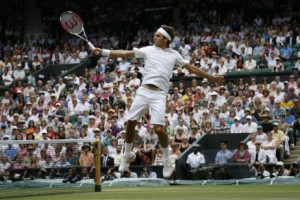
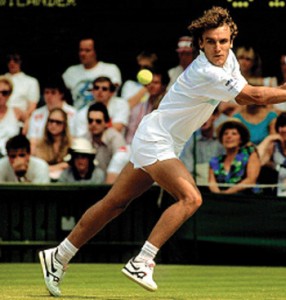
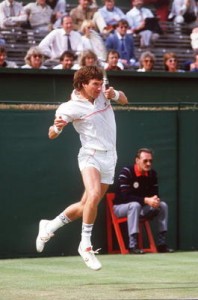
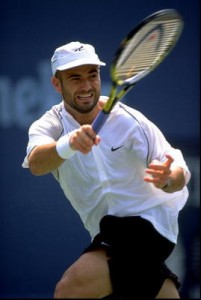

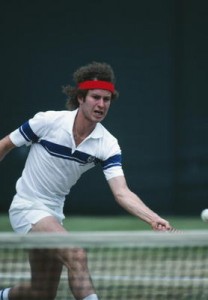

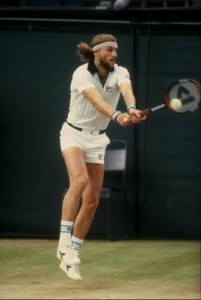
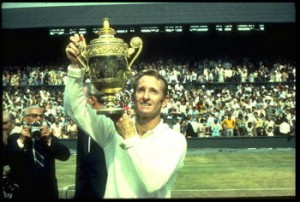
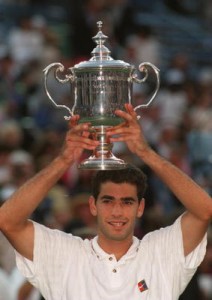
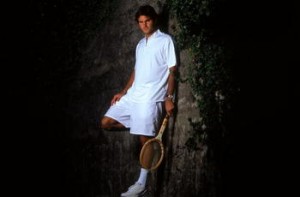
Good stuff.
bhgyxonj
Rigger has been the master of the schemes and games for the other individuals. Now the quantum of the success of the man has been increased and put forward for the sensitivity for the people.